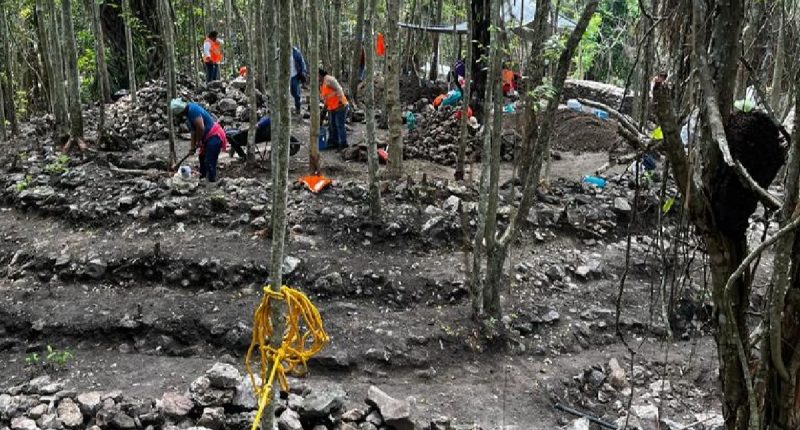AN ANCIENT structure that could’ve been linked to serpent gods has been discovered in a Mexican jungle.
Archaeologists think they’ve found proof of a disturbing cult and have high hopes that it could be the key to opening up 1,200-year-old Maya secrets.
The revelation shines a bright light on El Tigre’s spiritual significance and its importance in the Maya world after years of interest.
A team of researchers with the Mexican National Institute of Anthropology and History (INAH) found a chilling circular structure at an El Tigre site in Campeche, Mexico.
El Tigre has long been known as an ancient Maya settlement used by Chontal or Putun people who worshipped a serpent god known as Kukulcán.
According to INAH, the recently discovered structure dates way back to somewhere between 1,000 to 1,200 A.D. and is hoped to be linked to the cult of Kukulcán.
read more in archaeology
The eerie site sits on two levels and is very similar to other places found across the area.
It would’ve likely had a flat roof on top of it at one point to protect and house the god.
Speaking at a press conference this week, the head of the INAH, Diego Prieto Hernández, said that the find was of “great importance”.
The “Paxbolón Maldonado Papers”, a document produced for the Chontal chief Paxbolón Maldonado in 1575-1576 was one of the first pieces of work to mention the possible serpent cult links.
Most read in Tech
It describes a settlement known as Itzamkanac that featured several hidden temples dedicated to the four main divinities of the Postclassic Maya era, one of which was Kukulcán.
This has led to people strongly believing that the region of El Tigre is in fact Itzamkanac, a theory supported by the new discovery due to the location of the structure and previous data.
The El Tigre site was still used by people up until the beginning of the 16th century.
The area was once an important bustling town and had almost 10,000 people living in the area.
It was used as a connecting point between the area to the rest of Mesoamerica, such as central Mexico, Oaxaca, and the Gulf Coast.
The site where the breakthrough excavation took place is on a hill overlooking the Candelaria River, and has been found to once have two main plazas, with four large structures, a ball court, 13 altars and three stelas or big stone slabs.
The structure was found during archaeological rescue work as part of the Maya Train project.
A 1,000-mile-long railway is set to be opened next month and takes tourists through Mexico’s Yucatán Peninsula to see some historic finds.
Despite the railway allowing for thousands of ancient Maya artefacts and structures to finally be seen by the public it is known as one of the most controversial projects in Mexican history.
It aims to bring tourists away from the overcrowded beach areas and towards lesser-known locations in the jungle including the historic Maya sites.
This has been done to drive up money in the poorer areas of the country and boost the overall economy that’s been slowly dropping overtime.
Critics have raised environmental concerns and also rumoured that it’s caused the destruction of some rare places and things already.
One of mankind’s earliest civilisation also faced similar crazy claims.
Conspiracy theorists have shockingly announced that ancient villagers used sound energy to levitate and contact aliens.
The extraordinary theory, which has been gaining traction among conspiracy theorists, is based on the Sumerian civilisation that created weird shapes left in the ground caused by ultra-powerful vibrations.
Read More on The Sun
Earlier this year, mysterious ancient carvings emerged from a river for only the second time ever following a drought in the Amazon jungle.
The eerie artworks sculpted onto the rocks are thought to be between 1,000 and 2,000 years old but no one knows how they came to be etched in stone.













